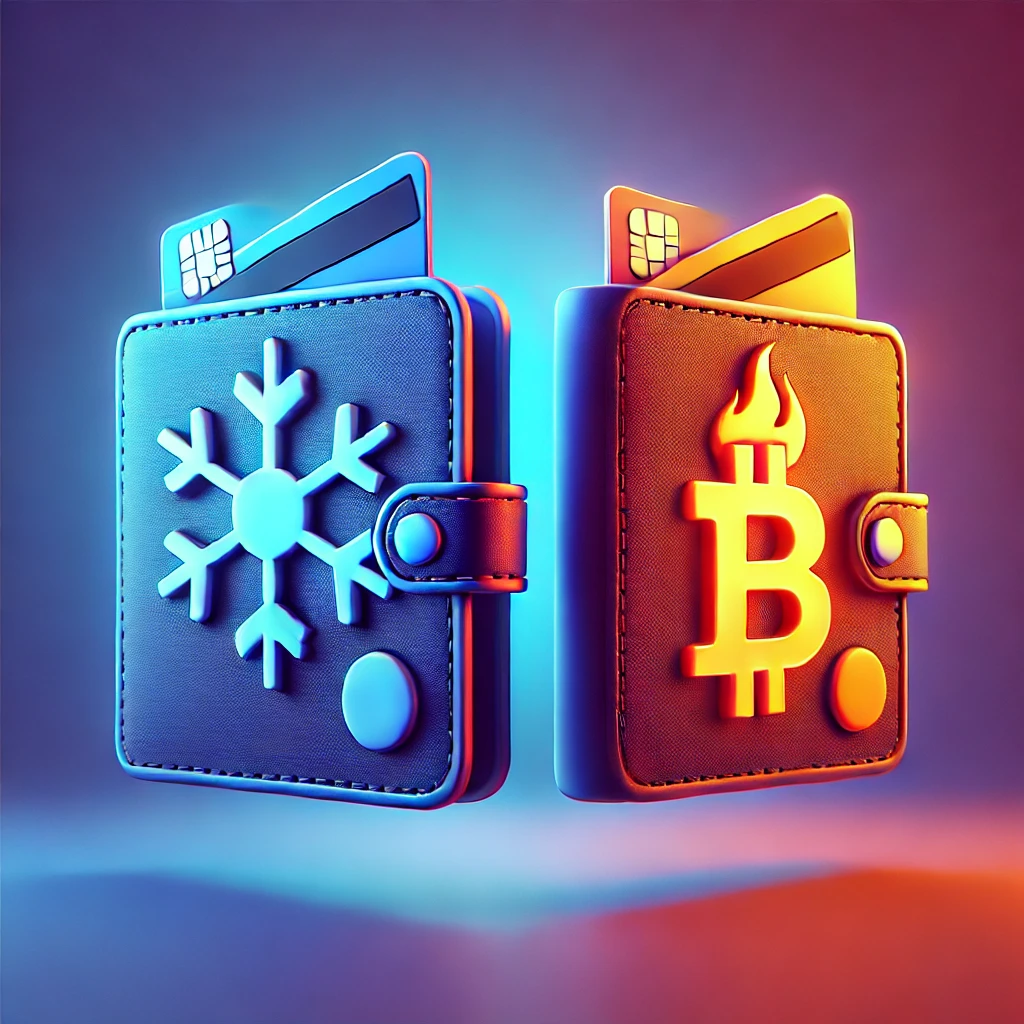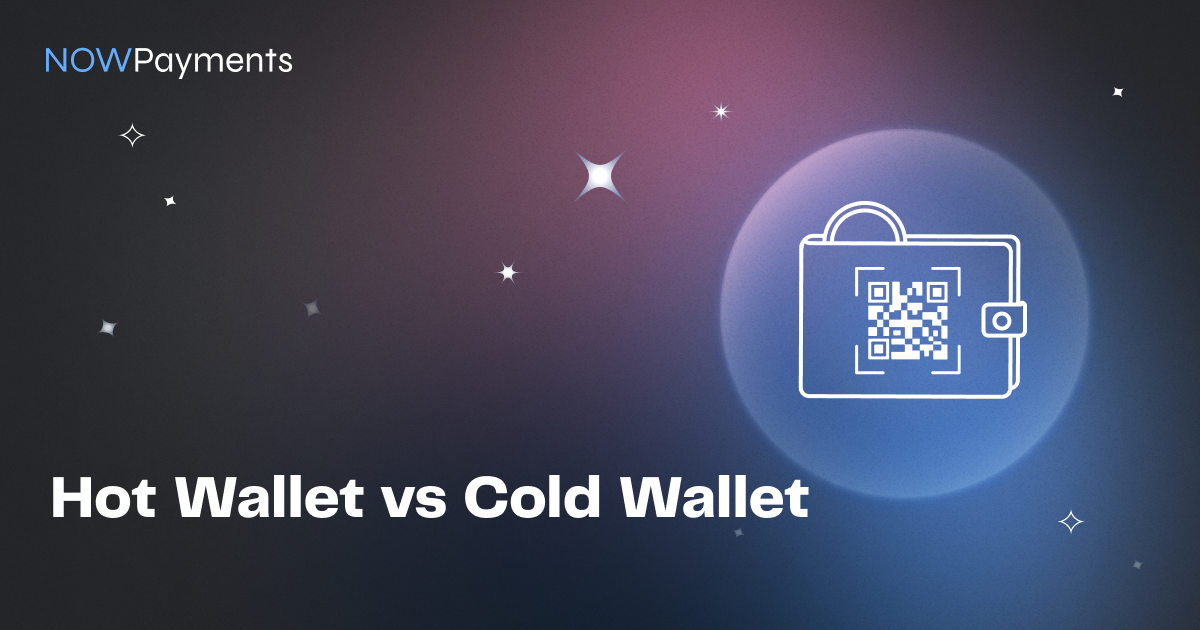Understanding crypto wallets is crucial for anyone engaging in the world of cryptocurrency. There are two primary types of wallets: hot wallets and cold wallets. Hot wallets are software wallets that connect to the internet, providing easy access to your crypto assets for quick transactions. They include options like mobile wallets and trust wallet. However, the convenience of hot wallets comes with security risks, as they are more susceptible to hacks. In contrast, cold wallets are offline storage solutions that include hardware wallets and paper wallets, making them ideal for long-term storage of your digital assets. Cold wallets offer enhanced security due to their offline nature, minimizing the risk of unauthorized access. Understanding the difference between hot wallets and cold wallets is essential for effective management of your cryptocurrency holdings.
When choosing a wallet type, it’s important to consider how you plan to use your crypto, especially when comparing hot wallets vs cold crypto wallets. Hot wallets are great for frequent transactions, while cold wallets provide a secure cold storage solution for long-term holding. Different types of cold wallets, such as hardware devices, are designed to keep your private key safe and offline. This security feature is what makes them preferable for users who wish to protect their investments from market volatility and cyber threats. The security of a cold wallet is paramount, especially when holding significant amounts of cryptocurrency. Ultimately, whether you choose a hot wallet or a cold wallet, understanding their differences will help you make informed decisions about your crypto transactions.

Cold Wallets Explained
When discussing hot wallets vs cold wallets, it’s essential to understand the primary differences between these two types of crypto wallets. Hot wallets offer convenience and are typically used for daily transactions, allowing users to store your crypto easily. Common types of hot wallets include mobile and web wallets, which are often free and easily accessible. However, they are more vulnerable to hacks compared to their cold counterparts.
In contrast, cold wallets are designed for long-term storage of cryptocurrency and are considered more secure. These wallets include hardware wallets and paper wallets, which are physical devices or documents that store your private keys offline. A cold crypto wallet is ideal for investors looking to hold their assets for extended periods without the risk of online threats. Understanding what’s the difference between hot vs cold wallets is crucial for anyone engaging with a crypto exchange or managing their digital assets.
What Is A Cold Wallet?
A cold wallet is a type of cryptocurrency wallet that is designed for long-term storage of digital assets. Unlike hot wallets, which are connected to the internet and allow for quick and easy access to funds, cold wallets are generally offline and provide enhanced security. Hot wallets are ideal for daily transactions and using a hot wallet is often free and convenient. However, cold wallets may be more secure than hot wallets, protecting your crypto keys from online threats. This makes them a preferred choice for investors looking to hold assets for an extended period.
There are several types of cold wallets, including hardware wallets and paper wallets, which are physical devices or documents that store your crypto keys offline. Cold wallets typically offer less convenience and accessibility compared to hot wallets, but they ensure that your funds are safeguarded against hacking and other risks in the crypto world. Many users adopt a combination of both wallet types to balance security and accessibility, allowing them to manage their investments effectively.

Best wallets for security: cold wallets
When it comes to securing your cryptocurrency, cold wallets offer a superior option compared to hot crypto wallets. While hot wallets are known as a software wallet and are connected to the internet, making them convenient for daily transactions, they are inherently less secure. In contrast, cold wallets provide enhanced security, making them ideal for long-term storage of digital assets. These wallets usually come in various forms, including hardware devices and paper wallets, which are less susceptible to hacking.
Many users find value in combining hot and cold wallets to balance accessibility and security. Common types of cold wallets, like USB devices or dedicated hardware wallets, allow users to store their crypto safely offline. While hot wallets are free to use and offer convenience, cold wallets ensure that your investment remains protected from online threats, reinforcing their position as the preferred choice for serious investors. Selecting the right wallet provider and understanding the wallet options available can significantly enhance your crypto security strategy, particularly when weighing hot wallets vs cold crypto.
Hot Wallets Explained
Hot wallets are a type of cryptocurrency wallet that is connected to the internet, making them particularly useful for those who are new to the crypto world. These wallets offer convenience and accessibility, allowing users to easily send and receive digital assets. However, the online nature of hot wallets also makes them more vulnerable to security threats compared to cold crypto wallets.
In contrast, cold wallets are designed for long-term storage and are offline, which makes them significantly less susceptible to hacking. A cold wallet for long-term storage is ideal for individuals who wish to store their cryptocurrencies securely over time. In addition, wallets come in various forms, including hardware wallets, which are physical devices designed to safely store private keys offline. The differences between a hot wallet and a cold wallet highlight the importance of a balanced approach to cryptocurrency management, often involving a combination of hot and cold wallets for both accessibility and security.
What Is A Hot Wallet?
A hot wallet refers to a cryptocurrency wallet that is connected to the internet, making it easy for users to access and manage their digital assets. Unlike cold wallets, which utilize offline storage for enhanced security, hot wallets are designed for convenience. One of the main advantages of a hot wallet is that it generates quick access to funds, allowing for easier transactions. For instance, Metamask is a popular hot wallet that enables users to interact with decentralized applications effortlessly.
However, hot and cold wallets ultimately serve different purposes. While hot wallets are well-suited for storing smaller amounts of cryptocurrency for daily transactions, cold wallets are ideal for holding larger sums securely. Cold wallets utilize offline storage, making them less vulnerable to hacking. On the other hand, hardware wallets, which are a type of cold wallet that is a physical device, can be more expensive but offer robust security against potential threats.

Best wallets for convenience: hot wallets
When considering the best wallets for convenience, hot wallets often take the lead. Unlike cold crypto wallets, which prioritize security through offline storage, hot wallets are connected to the internet, allowing for quick and easy access to your funds. This makes storage makes cold wallets less appealing for those who prefer immediate transactions. For example, Metamask is a popular hot wallet that enables users to interact seamlessly with decentralized applications.
While hot wallets are ideal for storing smaller amounts of cryptocurrency for daily use, they do come with their risks. The accessibility of hot and a cold wallet is a double-edged sword, as being online makes them more vulnerable to hacks. Conversely, a hardware wallet is a physical device that offers superior security by keeping your private keys offline. However, wallets can be more expensive and might not be as convenient for frequent transactions.
Key Differences Between Hot And Cold Wallets
Hot and cold crypto wallets serve distinct purposes in the management of digital assets. A hot wallet is connected to the internet, allowing for quick transactions and easy access, making it ideal for traders who need to move funds frequently. However, this connectivity exposes hot wallets to potential security risks, such as hacking and phishing attacks. In contrast, a cold wallet offers offline storage, which makes it less susceptible to online threats. These wallets are physical devices, like a hardware wallet, that securely store private keys offline, ensuring that assets stored in a cold wallet remain safe from digital intrusions.
When choosing between hot and cold wallets, users must consider their needs. If frequent transactions are necessary, a hot wallet like Metamask is suitable for quick access. On the other hand, for long-term storage, cold crypto solutions are well-suited for storing significant amounts of cryptocurrency. Ultimately, the choice between hot and cold wallets depends on the balance between accessibility and security.
How To Choose Between Hot And Cold Wallets
Choosing between hot and cold wallets is crucial for managing your cryptocurrency effectively. A hot wallet, like Metamask, is connected to the internet, making it convenient for daily transactions. However, this connectivity also exposes it to potential hacks and cyber threats. In contrast, cold crypto wallets offer enhanced security as they are not connected to the internet. This offline storage makes cold wallets ideal for holding larger amounts of cryptocurrency over a longer period.
When deciding which option suits your needs, consider how frequently you plan to access your funds. If you engage in regular trading, a hot wallet may be more practical. For long-term holders, using a hardware wallet to a device that stores your assets offline is a safer choice. Ultimately, balancing convenience and security is key to selecting the right wallet for your cryptocurrency investments.
Conclusion
No matter whether you prefer hot wallets or cold wallets for managing your crypto assets, using a reliable crypto payment gateway like NOWPayments can greatly enhance your experience. With NOWPayments, you can seamlessly integrate cryptocurrency payments into your transactions, whether you store your assets in a hot wallet for quick access or a cold wallet for long-term security. By offering support for a variety of wallets and cryptocurrencies, NOWPayments ensures you have the flexibility to manage your funds as you see fit, without sacrificing convenience or security.
NOWPayments stands out as a leading crypto payment gateway due to its robust security measures, ease of integration, and wide range of supported cryptocurrencies. Whether you’re using hot wallets for frequent transactions or cold wallets for enhanced security, NOWPayments makes it easy to handle crypto payments with confidence. The platform’s focus on security aligns well with cold wallets, while its user-friendly features cater to the convenience sought by hot wallet users.
Ultimately, NOWPayments provides a versatile solution that adapts to your wallet preferences and payment needs. With its streamlined process, you can enjoy the benefits of both hot and cold wallets while ensuring efficient, secure, and flexible payment options. Try NOWPayments to take full advantage of the diverse possibilities it offers for crypto transactions, regardless of the wallet type you choose.

